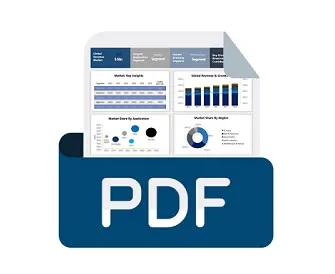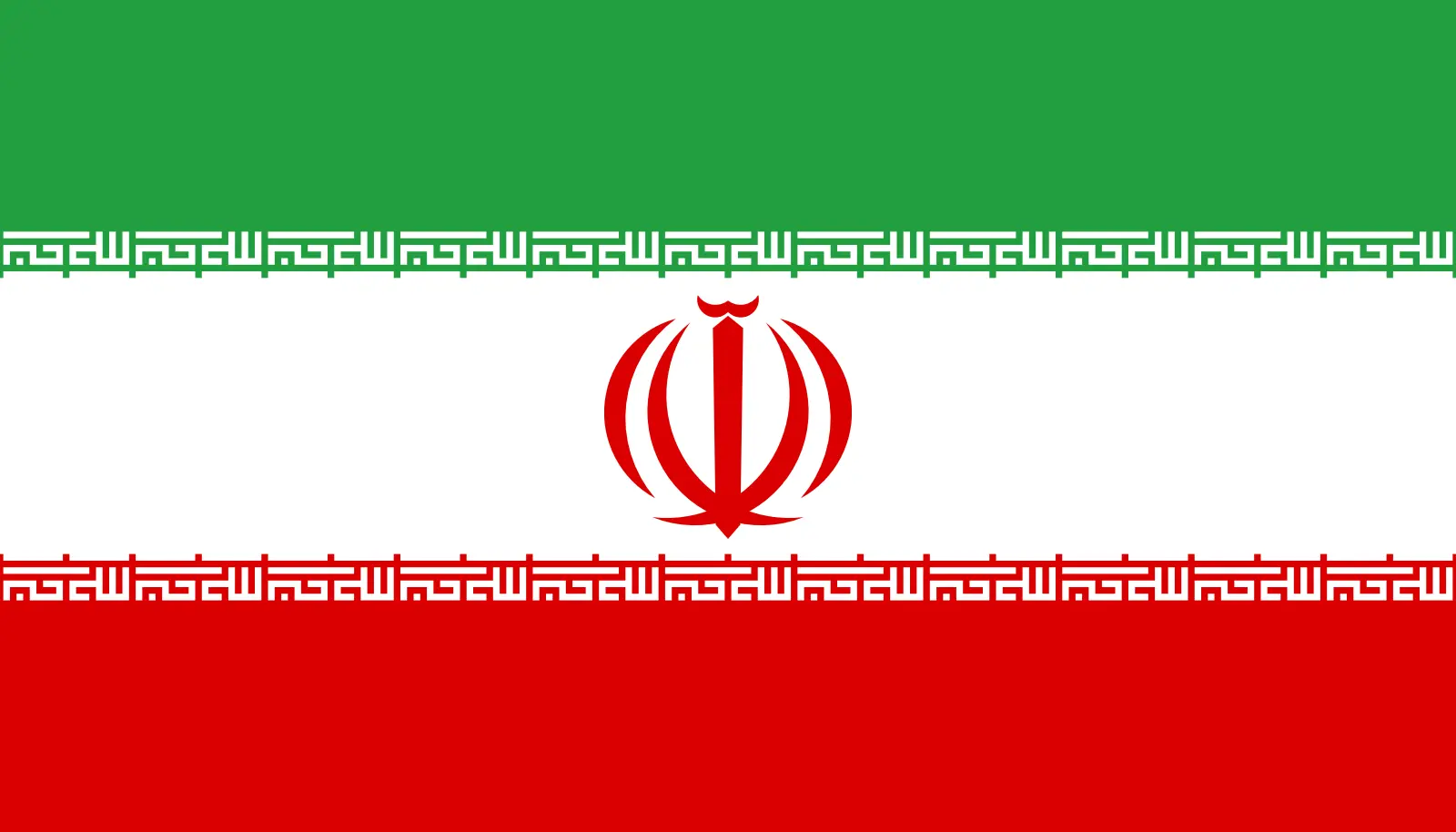Global Industrial Hydrogen Energy Storage Market Trends, Forecast Report 2025-2037
Industrial Hydrogen Energy Storage Market size was valued at USD 12.56 billion in 2024 and is expected to reach USD 33.75 billion by 2037, expanding at around 7.9% CAGR during the forecast period i.e., between 2025-2037. In the year 2025, the industry size of industrial hydrogen energy storage is assessed at USD 13.45 billion.
Rising demand for clean energy is the major growth factor of this sector. Hydrogen is the key solution for environmental decarbonization through storing renewable energies. The energy storage system can be efficiently used in the transportation, chemical, and steel manufacturing industries. Additionally, green hydrogen promotes the adoption of renewable energy sources for production, making it an attractive option for countries to foster a carbon-free climate.
Ongoing innovations in electrolyzers and fuel cell technologies have made industrial hydrogen energy storage cost-effective and efficient. More hydrogen refueling stations and pipelines are being developed to fulfill the demand, supporting the market growth. In May 2024, Nikola Corporation announced the opening of a HYLA high-pressure modular refueling station and facility in Southern California. Such corporate initiatives are achieving milestones in producing zero-carbon emission transportation. In addition, inspiring other key players to invest in such innovations.

Industrial Hydrogen Energy Storage Sector: Growth Drivers and Challenges
Growth Drivers
- Initiatives for global decarbonization: Increasing pressure to minimize carbon footprint has impelled industries to adopt alternative energy sources. Hydrogen has proven to be the most suitable option for large-scale power consumers with less carbon emission. According to an article published by IRENA, in 2022, hydrogen can be used to decarbonize cost-effectively in heavy manufacturing industry, long-haul transport, and seasonal energy storage. It further states, that these energy sources can fulfill 10% of the mitigation requirement to achieve the IRENA 1.5°C Scenario and 12% of final energy demand. These energy storage systems allow industries to align with the regulatory frameworks on environmental safety.
Governments are also implementing policies to support hydrogen production and usage through subsidies, tax incentives, and research funding. In October 2023, the Federal allocated USD 7 billion in funding to the U.S. Department of Energy for the regional Clean Hydrogen Hubs program. The number of low-emission hydrogen production has also increased. Subsequently influencing the industrial hydrogen energy storage market to grow. - Development in manufacturing process: Innovations in hydrogen production and management are fueling the supply of green energy for industries. Improved efficiency and reduced costs are making hydrogen a more viable energy solution. New techniques such as water electrolysis are being introduced to acquire the optimum amount of hydrogen. According to an article published by the Royal Society of Chemistry, in September 2023, hydrogen production by splitting water using renewable energy can obtain up to 95% pure hydrogen.
Government and private authorities are launching bigger projects to introduce more enhanced techniques for better production. For instance, in January 2024, NTPC Green Energy Limited signed a M0U with Maharashtra government. This MoU was issued to develop the capacity of annual green hydrogen, including Pump Hydro and RE projects.Further increasing the amount of hydrogen production each year. According to a report published by the International Energy Agency, in July 2023, the expansion of projects has the potential to produce a 50% greater amount of low-emission hydrogen.
Challenges
- Expensive hydrogen production: The cost of green hydrogen production is costlier than fossil fuels, making it less competitive without subsidies or funding. As a result, most of the hydrogen is produced from natural gas, which is carbon-intensive and hard to comply with tightened regulations. Further, industries are bound to rethink before investing in hydrogen energy storage implementation. The higher cost of initial funding for electrolyzer technology contributes to non-negotiable expenses.
- Safety concerns: Region-specific regulations can be stringent for investment infrastructure of hydrogen energy storage. From production to end use, safety during transportation can raise logistical challenges. Further, restricts the supply chain for hydrogen in the industrial hydrogen energy storage market. Public skepticism about the viability of using hydrogen as an energy source can prevent consumers from integrating. The evolving storage solutions such as liquid hydrogen, compressed hydrogen, and metal hydrides have limitations, which impact its scalability.
Industrial Hydrogen Energy Storage Market: Key Insights
| Report Attribute | Details |
|---|---|
|
Base Year |
2024 |
|
Forecast Year |
2025-2037 |
|
CAGR |
7.9% |
|
Base Year Market Size (2024) |
USD 12.56 billion |
|
Forecast Year Market Size (2037) |
USD 33.75 billion |
|
Regional Scope |
|
Industrial Hydrogen Energy Storage Segmentation
Method (Compression, Liquefaction, Material-based)
Compression segment is predicted to capture industrial hydrogen energy storage market share of around 83.2% by the end of 2037. Compression is a crucial component for the distribution and storage of hydrogen-generated energy. The growth of this segment is followed by the increase in the usage of hydrogen power storage for transportation. This method of energy storage has made the deployment more feasible. A variety of options for technology including mechanical, ionic, and electrochemical can be employed for hydrogen compression. Further, allowing consumers to choose according to their application, budget, and efficiency. In addition, advancements in technology and developments in storage materials are expected to enhance the functionality of this segment.
Our in-depth analysis of the global market includes the following segments:
|
Method |
|

Vishnu Nair
Head - Global Business DevelopmentCustomize this report to your requirements — connect with our consultant for personalized insights and options.
Industrial Hydrogen Energy Storage Industry - Regional Synopsis
APAC Market Statistics
Asia Pacific industry is poised to dominate majority revenue share of 58.4% by 2037. Exhibiting a remarkable increment in demand for renewable energy sources, the region is predicted to hold USD 7.9 billion by the end of 2025. The growth is supported by favorable policies, technological innovations, and a strong push towards sustainable power sources. Countries including Japan, South Korea, and Australia are implementing hydrogen energy storage as a transition strategy. National subsidies and incentives are helping in the reduction of hydrogen production costs. According to a 2024 strategy report published by the government in Australia, it will provide USD 2 per kilogram of hydrogen production as a Tax Incentive. This taxation policy will offer time-limited and demand-driven production support to eligible producers.
India is emerging as one of the largest industrial hydrogen energy storage market . Supportive government schemes and subsidies such as the Viability Gap Funding Program and National Green Hydrogen Mission are encouraging companies to invest. According to a report published by DPIIT, in September 2023, India government invested USD 2.4 billion to boost green hydrogen production and electrolyzer manufacturing. Government authorities are also offering subsidies to reduce the production cost. The 2023 DPIIT report states, that India is inviting bids for tranches, which will cover a capacity of 1500 megawatts, with an incentive of USD 52.83 per kilowatt.
China is also estimated to experience massive growth in the market. Rapid urbanization and interest in building large-scale energy sources for industries are inflating the demand for hydrogen energy supply. Even without proper government infrastructure for renewable energies, China is curating innovations in the market. According to a CSIS report, published in February 2022, China launched a hydrogen project to support fuel-supported vehicle deployment and production of renewable-based hydrogen.
North America Market Analysis
A significant growth is expected to be witnessed in North America industrial hydrogen energy storage market. The development of hydrogen power distribution channels and production infrastructure are driving the region to register lucrative growth. Government bodies are also investing in the transition of the power supply chain in industries. In March 2024, the Department of Energy announced a fund of USD 6 billion to decarbonize America’s energy-intensive industries. Such funding supports the implementation of hydrogen energy storage in industrial usage.
The U.S. market is influenced by the push for net-zero emissions by 2050. In 2021, DOE established the Hydrogen Earth Shot Challenge to reduce the cost of hydrogen production by 80%. The project supported the development and research events with funding and hydrogen hub grants. Industries are considering Hydrogen as a versatile energy carrier to align with the regulatory framework. The growing investments in green hydrogen are capturing key players to introduce new technologies for more efficient performance.
Canada has a large source of natural elements to produce hydrogen cost-effectively, which is helping the country elevate the industrial hydrogen energy storage market. The government has also been supportive by issuing strategies and investments. The country’s substantial hydropower and wind energy capacity is providing a foundation for green hydrogen production. Heavy industries are now focusing on integrating environment-friendly power-supply systems, where hydrogen fits perfectly. Further, this increases the demand for hydrogen energy storage.

Companies Dominating the Industrial Hydrogen Energy Storage Landscape
- Air Liquide
- Company Overview
- Business Strategy
- Key Product Offerings
- Financial Performance
- Key Performance Indicators
- Risk Analysis
- Recent Development
- Regional Presence
- SWOT Analysis
- Air Products and Chemicals, Inc.
- Cockerill Jingli Compressed hydrogen
- ENGIE
- FuelCell Energy, Inc.
- GKN Compressed Hydrogen
- Gravitricity Ltd
- ITM Power PLC
- Linde plc
- McPhy Energy S.A.
- Bharat Petroleum Corp.
- Reliance Industries
- Nel ASA
- SSE
The key players are innovating in production, storage, and distribution, bringing diversity to hydrogen energy applications. They are also developing technologies to utilize the stored power through hydrogen fuel cell systems and associated storage solutions. In October 2024, Nel ASA’s EPC partner launched IVHY100, a new green hydrogen solution. This model is designed to empower large-scale industries with improved scalability and decarbonization systems. Such innovation will help the company to consolidate its position in the market. Some of the prominent market players include:
Recent Developments
- In June 2024, HDF Energy received a grant of around USD 0.2 billion from the European Commission for the development and industrialization of high-power hydrogen fuel cells. This funding will further support its industrial project within the framework of IPCEISs.
- In September 2024, Australia and Germany signed a deal with a funding of around USD 0.7 billion, in the 2024 Asia Pacific Hydrogen Summit. This strategic agreement will further guarantee German buyers for Australian renewable hydrogen.
- In September 2023, Iberdrola and ABEL Energy announced an investment of around USD 1.2 billion to build a green hydrogen and green methanol production plant in Australia.
- Report ID: 6537
- Published Date: Jan 10, 2025
- Report Format: PDF, PPT
- Get detailed insights on specific segments/region
- Inquire about report customization for your industry
- Learn about our special pricing for startups
- Request a demo of the report’s key findings
- Understand the report’s forecasting methodology
- Inquire about post-purchase support and updates
- Ask About Company-Level Intelligence Additions
Have specific data needs or budget constraints?
Frequently Asked Questions (FAQ)
Industrial Hydrogen Energy Storage Market Report Scope
FREE Sample Copy includes market overview, growth trends, statistical charts & tables, forecast estimates, and much more.
Connect with our Expert
See how top U.S. companies are managing market uncertainty — get your free sample with trends, challenges, macroeconomic factors, charts, forecasts, and more.
 Inquiry Before Buying
Inquiry Before Buying


 Afghanistan (+93)
Afghanistan (+93)
 Åland Islands (+358)
Åland Islands (+358)
 Albania (+355)
Albania (+355)
 Algeria (+213)
Algeria (+213)
 American Samoa (+1684)
American Samoa (+1684)
 Andorra (+376)
Andorra (+376)
 Angola (+244)
Angola (+244)
 Anguilla (+1264)
Anguilla (+1264)
 Antarctica (+672)
Antarctica (+672)
 Antigua and Barbuda (+1268)
Antigua and Barbuda (+1268)
 Argentina (+54)
Argentina (+54)
 Armenia (+374)
Armenia (+374)
 Aruba (+297)
Aruba (+297)
 Australia (+61)
Australia (+61)
 Austria (+43)
Austria (+43)
 Azerbaijan (+994)
Azerbaijan (+994)
 Bahamas (+1242)
Bahamas (+1242)
 Bahrain (+973)
Bahrain (+973)
 Bangladesh (+880)
Bangladesh (+880)
 Barbados (+1246)
Barbados (+1246)
 Belarus (+375)
Belarus (+375)
 Belgium (+32)
Belgium (+32)
 Belize (+501)
Belize (+501)
 Benin (+229)
Benin (+229)
 Bermuda (+1441)
Bermuda (+1441)
 Bhutan (+975)
Bhutan (+975)
 Bolivia (+591)
Bolivia (+591)
 Bosnia and Herzegovina (+387)
Bosnia and Herzegovina (+387)
 Botswana (+267)
Botswana (+267)
 Bouvet Island (+)
Bouvet Island (+)
 Brazil (+55)
Brazil (+55)
 British Indian Ocean Territory (+246)
British Indian Ocean Territory (+246)
 British Virgin Islands (+1284)
British Virgin Islands (+1284)
 Brunei (+673)
Brunei (+673)
 Bulgaria (+359)
Bulgaria (+359)
 Burkina Faso (+226)
Burkina Faso (+226)
 Burundi (+257)
Burundi (+257)
 Cambodia (+855)
Cambodia (+855)
 Cameroon (+237)
Cameroon (+237)
 Canada (+1)
Canada (+1)
 Cape Verde (+238)
Cape Verde (+238)
 Cayman Islands (+1345)
Cayman Islands (+1345)
 Central African Republic (+236)
Central African Republic (+236)
 Chad (+235)
Chad (+235)
 Chile (+56)
Chile (+56)
 China (+86)
China (+86)
 Christmas Island (+61)
Christmas Island (+61)
 Cocos (Keeling) Islands (+61)
Cocos (Keeling) Islands (+61)
 Colombia (+57)
Colombia (+57)
 Comoros (+269)
Comoros (+269)
 Cook Islands (+682)
Cook Islands (+682)
 Costa Rica (+506)
Costa Rica (+506)
 Croatia (+385)
Croatia (+385)
 Cuba (+53)
Cuba (+53)
 Curaçao (+599)
Curaçao (+599)
 Cyprus (+357)
Cyprus (+357)
 Czechia (+420)
Czechia (+420)
 Democratic Republic of the Congo (+243)
Democratic Republic of the Congo (+243)
 Denmark (+45)
Denmark (+45)
 Djibouti (+253)
Djibouti (+253)
 Dominica (+1767)
Dominica (+1767)
 Dominican Republic (+1809)
Dominican Republic (+1809)
 Timor-Leste (+670)
Timor-Leste (+670)
 Ecuador (+593)
Ecuador (+593)
 Egypt (+20)
Egypt (+20)
 El Salvador (+503)
El Salvador (+503)
 Equatorial Guinea (+240)
Equatorial Guinea (+240)
 Eritrea (+291)
Eritrea (+291)
 Estonia (+372)
Estonia (+372)
 Ethiopia (+251)
Ethiopia (+251)
 Falkland Islands (+500)
Falkland Islands (+500)
 Faroe Islands (+298)
Faroe Islands (+298)
 Fiji (+679)
Fiji (+679)
 Finland (+358)
Finland (+358)
 France (+33)
France (+33)
 Gabon (+241)
Gabon (+241)
 Gambia (+220)
Gambia (+220)
 Georgia (+995)
Georgia (+995)
 Germany (+49)
Germany (+49)
 Ghana (+233)
Ghana (+233)
 Gibraltar (+350)
Gibraltar (+350)
 Greece (+30)
Greece (+30)
 Greenland (+299)
Greenland (+299)
 Grenada (+1473)
Grenada (+1473)
 Guadeloupe (+590)
Guadeloupe (+590)
 Guam (+1671)
Guam (+1671)
 Guatemala (+502)
Guatemala (+502)
 Guinea (+224)
Guinea (+224)
 Guinea-Bissau (+245)
Guinea-Bissau (+245)
 Guyana (+592)
Guyana (+592)
 Haiti (+509)
Haiti (+509)
 Honduras (+504)
Honduras (+504)
 Hong Kong (+852)
Hong Kong (+852)
 Hungary (+36)
Hungary (+36)
 Iceland (+354)
Iceland (+354)
 India (+91)
India (+91)
 Indonesia (+62)
Indonesia (+62)
 Iran (+98)
Iran (+98)
 Iraq (+964)
Iraq (+964)
 Ireland (+353)
Ireland (+353)
 Isle of Man (+44)
Isle of Man (+44)
 Israel (+972)
Israel (+972)
 Italy (+39)
Italy (+39)
 Jamaica (+1876)
Jamaica (+1876)
 Japan (+81)
Japan (+81)
 Jersey (+44)
Jersey (+44)
 Jordan (+962)
Jordan (+962)
 Kazakhstan (+7)
Kazakhstan (+7)
 Kenya (+254)
Kenya (+254)
 Kiribati (+686)
Kiribati (+686)
 Kuwait (+965)
Kuwait (+965)
 Kyrgyzstan (+996)
Kyrgyzstan (+996)
 Laos (+856)
Laos (+856)
 Latvia (+371)
Latvia (+371)
 Lebanon (+961)
Lebanon (+961)
 Lesotho (+266)
Lesotho (+266)
 Liberia (+231)
Liberia (+231)
 Libya (+218)
Libya (+218)
 Liechtenstein (+423)
Liechtenstein (+423)
 Lithuania (+370)
Lithuania (+370)
 Luxembourg (+352)
Luxembourg (+352)
 Macao (+853)
Macao (+853)
 Madagascar (+261)
Madagascar (+261)
 Malawi (+265)
Malawi (+265)
 Malaysia (+60)
Malaysia (+60)
 Maldives (+960)
Maldives (+960)
 Mali (+223)
Mali (+223)
 Malta (+356)
Malta (+356)
 Marshall Islands (+692)
Marshall Islands (+692)
 Mauritania (+222)
Mauritania (+222)
 Mauritius (+230)
Mauritius (+230)
 Mayotte (+262)
Mayotte (+262)
 Mexico (+52)
Mexico (+52)
 Micronesia (+691)
Micronesia (+691)
 Moldova (+373)
Moldova (+373)
 Monaco (+377)
Monaco (+377)
 Mongolia (+976)
Mongolia (+976)
 Montenegro (+382)
Montenegro (+382)
 Montserrat (+1664)
Montserrat (+1664)
 Morocco (+212)
Morocco (+212)
 Mozambique (+258)
Mozambique (+258)
 Myanmar (+95)
Myanmar (+95)
 Namibia (+264)
Namibia (+264)
 Nauru (+674)
Nauru (+674)
 Nepal (+977)
Nepal (+977)
 Netherlands (+31)
Netherlands (+31)
 New Caledonia (+687)
New Caledonia (+687)
 New Zealand (+64)
New Zealand (+64)
 Nicaragua (+505)
Nicaragua (+505)
 Niger (+227)
Niger (+227)
 Nigeria (+234)
Nigeria (+234)
 Niue (+683)
Niue (+683)
 Norfolk Island (+672)
Norfolk Island (+672)
 North Korea (+850)
North Korea (+850)
 Northern Mariana Islands (+1670)
Northern Mariana Islands (+1670)
 Norway (+47)
Norway (+47)
 Oman (+968)
Oman (+968)
 Pakistan (+92)
Pakistan (+92)
 Palau (+680)
Palau (+680)
 Palestine (+970)
Palestine (+970)
 Panama (+507)
Panama (+507)
 Papua New Guinea (+675)
Papua New Guinea (+675)
 Paraguay (+595)
Paraguay (+595)
 Peru (+51)
Peru (+51)
 Philippines (+63)
Philippines (+63)
 Poland (+48)
Poland (+48)
 Portugal (+351)
Portugal (+351)
 Puerto Rico (+1787)
Puerto Rico (+1787)
 Qatar (+974)
Qatar (+974)
 Romania (+40)
Romania (+40)
 Russia (+7)
Russia (+7)
 Rwanda (+250)
Rwanda (+250)
 Saint Barthélemy (+590)
Saint Barthélemy (+590)
 Saint Helena, Ascension and Tristan da Cunha (+290)
Saint Helena, Ascension and Tristan da Cunha (+290)
 Saint Kitts and Nevis (+1869)
Saint Kitts and Nevis (+1869)
 Saint Lucia (+1758)
Saint Lucia (+1758)
 Saint Martin (French part) (+590)
Saint Martin (French part) (+590)
 Saint Pierre and Miquelon (+508)
Saint Pierre and Miquelon (+508)
 Saint Vincent and the Grenadines (+1784)
Saint Vincent and the Grenadines (+1784)
 Samoa (+685)
Samoa (+685)
 San Marino (+378)
San Marino (+378)
 Sao Tome and Principe (+239)
Sao Tome and Principe (+239)
 Saudi Arabia (+966)
Saudi Arabia (+966)
 Senegal (+221)
Senegal (+221)
 Serbia (+381)
Serbia (+381)
 Seychelles (+248)
Seychelles (+248)
 Sierra Leone (+232)
Sierra Leone (+232)
 Singapore (+65)
Singapore (+65)
 Sint Maarten (Dutch part) (+1721)
Sint Maarten (Dutch part) (+1721)
 Slovakia (+421)
Slovakia (+421)
 Slovenia (+386)
Slovenia (+386)
 Solomon Islands (+677)
Solomon Islands (+677)
 Somalia (+252)
Somalia (+252)
 South Africa (+27)
South Africa (+27)
 South Georgia and the South Sandwich Islands (+0)
South Georgia and the South Sandwich Islands (+0)
 South Korea (+82)
South Korea (+82)
 South Sudan (+211)
South Sudan (+211)
 Spain (+34)
Spain (+34)
 Sri Lanka (+94)
Sri Lanka (+94)
 Sudan (+249)
Sudan (+249)
 Suriname (+597)
Suriname (+597)
 Svalbard and Jan Mayen (+47)
Svalbard and Jan Mayen (+47)
 Eswatini (+268)
Eswatini (+268)
 Sweden (+46)
Sweden (+46)
 Switzerland (+41)
Switzerland (+41)
 Syria (+963)
Syria (+963)
 Taiwan (+886)
Taiwan (+886)
 Tajikistan (+992)
Tajikistan (+992)
 Tanzania (+255)
Tanzania (+255)
 Thailand (+66)
Thailand (+66)
 Togo (+228)
Togo (+228)
 Tokelau (+690)
Tokelau (+690)
 Tonga (+676)
Tonga (+676)
 Trinidad and Tobago (+1868)
Trinidad and Tobago (+1868)
 Tunisia (+216)
Tunisia (+216)
 Turkey (+90)
Turkey (+90)
 Turkmenistan (+993)
Turkmenistan (+993)
 Turks and Caicos Islands (+1649)
Turks and Caicos Islands (+1649)
 Tuvalu (+688)
Tuvalu (+688)
 Uganda (+256)
Uganda (+256)
 Ukraine (+380)
Ukraine (+380)
 United Arab Emirates (+971)
United Arab Emirates (+971)
 United Kingdom (+44)
United Kingdom (+44)
 Uruguay (+598)
Uruguay (+598)
 Uzbekistan (+998)
Uzbekistan (+998)
 Vanuatu (+678)
Vanuatu (+678)
 Vatican City (+39)
Vatican City (+39)
 Venezuela (Bolivarian Republic of) (+58)
Venezuela (Bolivarian Republic of) (+58)
 Vietnam (+84)
Vietnam (+84)
 Wallis and Futuna (+681)
Wallis and Futuna (+681)
 Western Sahara (+212)
Western Sahara (+212)
 Yemen (+967)
Yemen (+967)
 Zambia (+260)
Zambia (+260)
 Zimbabwe (+263)
Zimbabwe (+263)

